Tile grout for bathroom tile joints: which one is better?

Tile is undoubtedly the most popular material for finishing walls and floors in the bathroom. And there are many objective reasons for this: it is easy to clean, it is resistant to moisture and direct ingress of moisture, it is hygienic and environmentally friendly. The choice of floor and wall ceramic tiles is always approached very responsibly.

However, the way your bath will ultimately look after repair and how long you will serve tile, depends not only on the quality of the tiles and the skill of the builder who will install it. The end result depends largely on the quality of related products, such as grout for tiles. Someone who has never dealt with the laying of tiles, perhaps, does not even know about its purpose. In this article, we will tell you what you need grout for tiles, what grout mixes there are and how to use it.
The purpose of grout
Tile grout is a dry construction mixture, which can be both cement-based and epoxy-based. Grout is used to fill the seams between the tiles. This is done not only for aesthetic reasons, but also to prevent moisture from getting into the joints and accumulation of mold and bacteria.
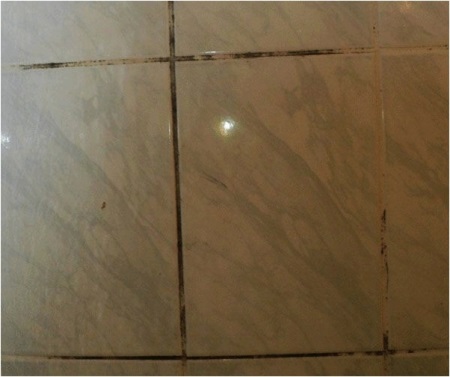
In addition, a properly chosen grout can help to hide defects caused by uneven walls or improper tile placement.
What do I need to know before choosing a grout?
Before you go to the store for grout for joints, you should consider that grout is divided into two main types, depending on The main component of the mixture: grout on the cement base and grout based on resins (particularly epoxy resin).
The cement base is more popular with consumers. This is primarily due to its lower cost. In addition, it is easier to work with cement grout. It is enough to dilute the dry mixture with water or water-based latex to the desired consistency. However, in some cases, grout is sold ready-to-use in plastic buckets.
It should be borne in mind that, although it is more convenient to use a ready mix, it is less economical than using a dry mix. The point is that the ready mix dries very quickly and if you don't have time to use the whole bucket soon after opening, the rest of the mix will quickly harden and you'll have to throw it away.
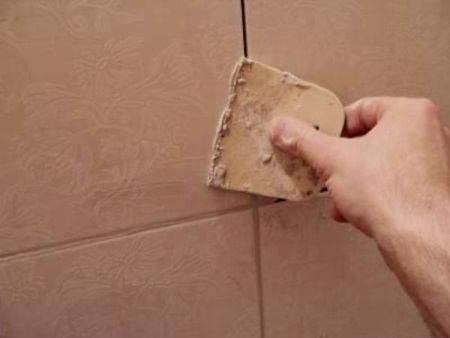
Among resin-based grouts, the most common is epoxy-based grout. There are other grouts, such as those based on furan resin. However, they are rarely used in interior finishes. For example, grouting on the basis of furan resin is used mainly in industrial enterprises in difficult manufacturing conditions. Epoxy grout, on the other hand, is used everywhere.
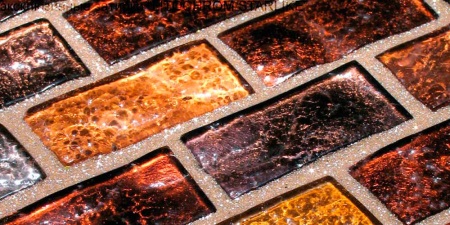
How to choose the right type of grout?
The criteria for choosing cement and epoxy grout are somewhat different.
Cement grout can be designed for work with narrow joints (up to 5 mm) or wide joints (more than 5 mm). If you have to work with wide joints, you will need to buy a grout with sand. And the wider the joint between the tiles, the coarser the sand grains should be in the mixture. In some cement mixes also add special chemicals designed to fight the formation of mold and fungi - fungicides.
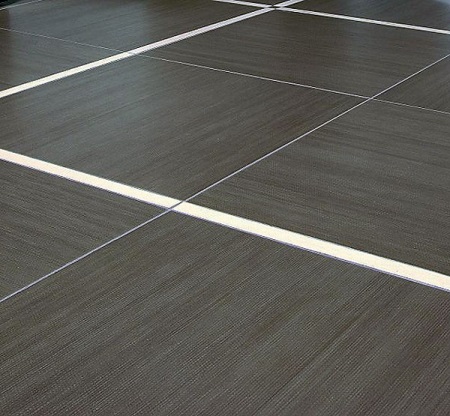
Most experienced tilers still advise to give preference to epoxy grout in the bathroom, Because they, unlike cement grout, do not deteriorate under the influence of chemicals and are more resistant to all kinds of dirt. However, cement grout will also work for floor tiles.
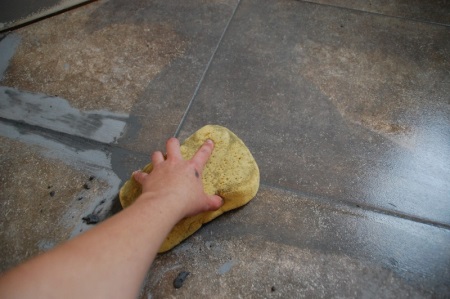
If you do decide to use cement grout, we recommend that you also purchase a hydrophobizer, a special compound that gives the surface treated with it water-repellent properties.
As we've already noted, among resin-based grouts, epoxy grout is the epoxy resin grout is the best option. It consists of epoxy resin, a hardener, and a dyeing component. There is also the so-called two-component grout, which consists of cement diluted with a latex plasticizer. Such a grout is much stronger than the others and is usually used on the facades of buildings.
Color mixes
The color of the grout is selected on the basis of the color of the tiles.
Cement grout can be both natural gray and any other color, from white to black, depending on the color pigment used. If you can't find the shade you want in the ready-to-use mixture, you can create it yourself by purchasing a white grout and a color tint to go with it.
The choice of epoxy grout is much wider, but you cannot color epoxy grout yourself. Thanks to the addition of shiny components, manufacturers have been able to achieve the effect of gold, silver, bronze, metallic. The range is truly impressive.
When choosing a grout color, there are two simple rules to follow:
- Dark and contrasting grout should be used only if you are sure that the tiles lie perfectly. The fact is that such a contrast of colors emphasizes the pattern of laying tiles.
- If, however, during the laying of the tiles had some errors, it is better to use a light grout. In this case, the darker color of the tile will visually hide the existing irregularities.
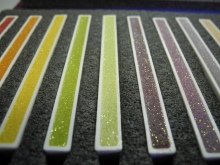
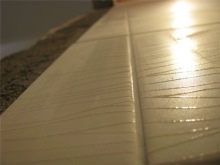
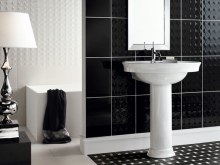
In order not to make a mistake with the choice of tiles, we advise you to take samples of tiles used in the bathroom to the construction store.
Colorless or transparent.
In case you use a combination of several colors in the bathroom decor or decide to buy mosaic tiles, a transparent grout will be perfect for you. It is made on the basis of glass and is ideal for grouting joints of art and glass mosaics. Transparent grout is called very conventionally - it does not let the light in and takes on the color of the grouted tile. But in itself it is not transparent. Such grout is used only on narrow joints up to 2 mm wide.
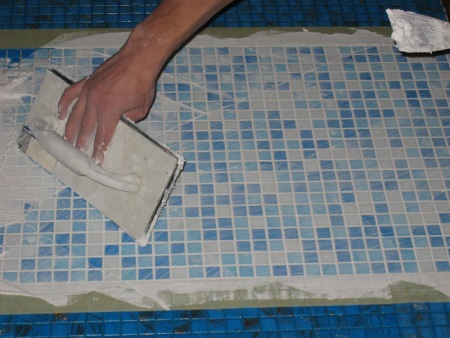
Leading manufacturers of grout mixtures
The proper service life of tiles also depends to a large extent on the manufacturing company. It is better to trust proven manufacturers. Among the most popular manufacturers of grout in the Russian market should be noted:
- Ceresit (cement-based mixes, one-component silicone grout, two-component grout)
- Atlas (cement and epoxy grout mixes)
- Weber Vetonit (cement based grout mixtures)
- Unis (cement based grout mixtures)
- Litochrome (cement based and two component epoxy mixes)
- Knauf (cement-based mixtures).
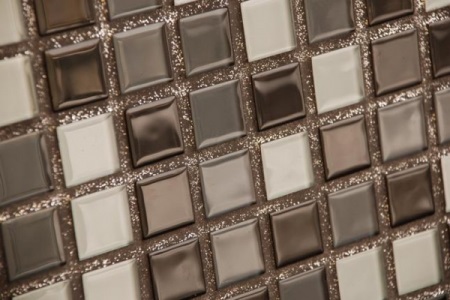
The high quality of the manufacturer's products does not guarantee you a reliable result if you do not carefully follow the instructions.

Porous tiles? There is a solution!
Porous ceramic tiles have high moisture-absorbing properties, so it is not recommended to use them in rooms with high humidity. To ensure that the tiles do not suffer in use, they are coated with a special glaze or varnish to improve water resistance. Such varnish is also often used to create decoupage drawings on the tiles. Although such a varnish is expensive, it gives the tiles a number of very useful properties:
- protects against stains, moisture, dirt and dust
- eases tile care and cleaning
- it prevents the fading process
- it gives a glossy surface.
Silicone grout is often used to treat seams and joints in ceramic tiles. The treatment of joints in this way increases the water permeability of the joints and prevents the formation of mold and mildew. The work is carried out with a special gun with a ready-to-use composition, which greatly facilitates the process of treating the joints.

Grouting joints with your own hands - instructions
During work, be sure to use rubber gloves, a respirator and safety glasses.
- Depending on the type of grout used, open a bucket with ready-made grout or add a liquid component to the dry mixture (hardener for epoxy grout and water or water-based silicone for cement grout). The consistency of the grout should resemble toothpaste.
- Remove crampons and any debris from the tile joints.
- Fill the joint space with grout. Use a special rubber trowel for this purpose. At one time, it is necessary to grout the joints in an area of no more than one square meter. It is best to grout the joints first from top to bottom and then from left to right - this is how professionals usually work. The more densely you fill the seams, the stronger the tile will hold.
- Clean any excess grout from the joints. The faster you do this, the easier it will be to remove.
- Gradually work your way up through the entire area of the room.
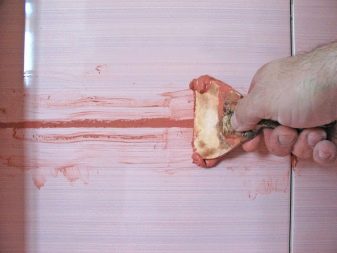
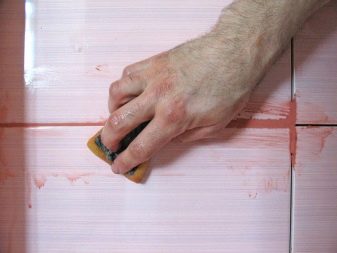
As the grout dries, the remaining grout on the tile itself can be wiped off with a rag. Epoxy grout is easier to rinse off with warm water and a small concentration of detergent.
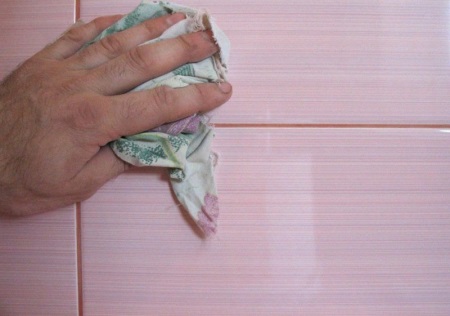
Of course, the process of laying tile is time-consuming and very troublesome. However, laying tiles yourself, you have the opportunity to save a lot of money, because the cost of tile laying sometimes exceeds the cost of consumables.
It is possible that you will not succeed with the first time, but you should not be afraid of difficulties. The main thing is to follow the instructions in everything.





I will use a colorless grout to grout the mosaic.